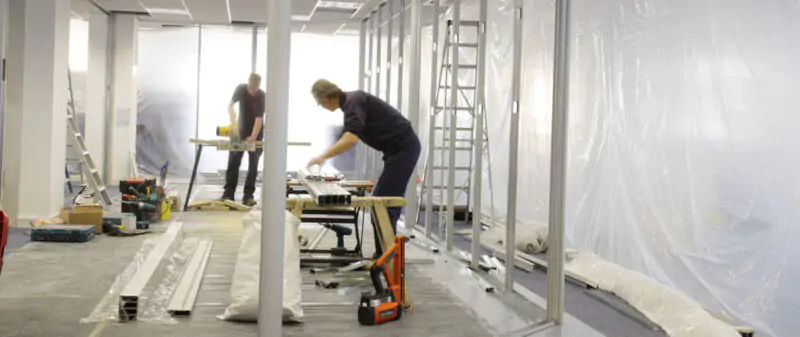

Dilapidations can be a confusing part of commercial tenancies and failure to understand them can be a concern for both landlords and tenants since no-one wants to be held responsible for damage they didn’t do. To provide more information about the topic, we’ve put together some key considerations and issues that tenants and landlords should bear in mind when managing dilapidations for a commercial property.
What Do Landlords Need to Consider?
Establishing the Extent of the Breach
Commercial leases typically grant the landlord (and authorized personnel) the right to enter the property for various purposes. To determine the extent of any breaches of the repairing covenant, the landlord usually needs to arrange for a surveyor to inspect the premises. The surveyor should document any breaches found in a schedule of dilapidations.
After the initial inspection, the landlord should re-inspect the property to see if the tenant has remedied any breaches or begun to do so. The critical date in a dilapidations claim is the lease expiry date, so it is advisable for the landlord to re-inspect soon after this date to identify any outstanding breaches and take photographic evidence of the premises’ condition.
Timing Issues: During the Lease
The tenant must be given a reasonable time to remedy a breach before the landlord can take action. What constitutes a reasonable time depends on the nature of the required repairs but will not be less than the period specified in the lease for complying with a repair notice. In some cases, the Leasehold Property Repairs Act 1938 applies, giving the tenant 28 days to serve a counter notice. If the tenant serves this notice, the landlord needs the court’s consent before taking action to forfeit the lease or claim damages for the breach.
Timing Issues: At the End of the Lease
In 2012, the Dilapidations Protocol introduced by the Property Litigation Association was adopted as a formal pre-action protocol in the Civil Procedure Rules. This protocol includes a recommended timetable for handling disputes, stating that the landlord should serve a schedule of dilapidations within a reasonable time after the lease term ends, usually within 56 days. The tenant should also be given a reasonable time to respond, typically 56 days.
What if a Tenant Breaches a Repair Agreement?
There are specific statutory restrictions on how a landlord can address a breach of a tenant’s repairing covenant. The landlord’s options depend on the lease terms and whether the lease has expired.
If the Lease is Still in Term
If the lease has not yet expired, landlords have several options. The landlord can end the lease, provided advance notice is given for non-rent breaches. Alternatively, many modern commercial leases include clauses that allow the landlord to enter the property, perform necessary repairs and then recover the costs from the tenant. Exercising this right is treated as debt recovery, not a claim for damages. They may also seek a court order requiring the tenant to carry out the repairs, though such orders are rarely granted.
At the End of the Term
Once the lease has ended, the landlord’s primary recourse is to file a claim for damages. For claims made during the lease, damages are calculated based on the diminution in the value of the reversion. This reflects the estimated loss in property value due to the tenant’s failure to comply with repair covenants, rather than the full cost of repairs. Dilapidations claims may also address breaches of other tenant covenants, such as decoration, compliance with statutory requirements, reinstatement of alterations and the removal of fixtures.

Minimising Dilapidations Costs for Both Parties
Since dilapidations can result in significant costs for both landlords and tenants, it’s essential to take proactive measures to minimise expenses. For landlords, maintaining detailed records of the property’s condition before and during the tenancy is essential, ideally with a Schedule of Condition report. Regular inspections, coupled with open communication with tenants, can help identify potential issues early on and prevent them from escalating. Implementing a comprehensive maintenance programme and promptly addressing any repairs can also go a long way in reducing dilapidations costs.
Tenants, on the other hand, should ensure they’re adhering to the lease terms and maintaining the property in good condition. Conducting thorough inspections at the beginning and end of the tenancy can help document the property’s state and mitigate potential disputes. It’s advisable to seek professional advice when necessary and address any maintenance or repair issues promptly.
Additionally, both parties can benefit from negotiating dilapidations settlements in good faith. Open communication, transparency and a willingness to compromise can often lead to mutually agreeable solutions, avoiding the need for costly legal proceedings. Engaging professional surveyors can also facilitate fair and impartial assessments, ultimately reducing the financial burden associated with dilapidations.
Dilapidations are a complex facet of commercial property leasing that demands careful attention from both landlords and tenants. It’s essential to thoroughly understand lease terms, engage in negotiations and seek legal advice when necessary. Proactively managing dilapidations helps commercial landlords and tenants maintain a cooperative relationship and safeguard their respective interests.
If you are or may become involved in a dilapidations dispute, please don’t hesitate to get in touch with us. We have a wealth of expertise in this area that can be crucial in helping you achieve a fair resolution.



